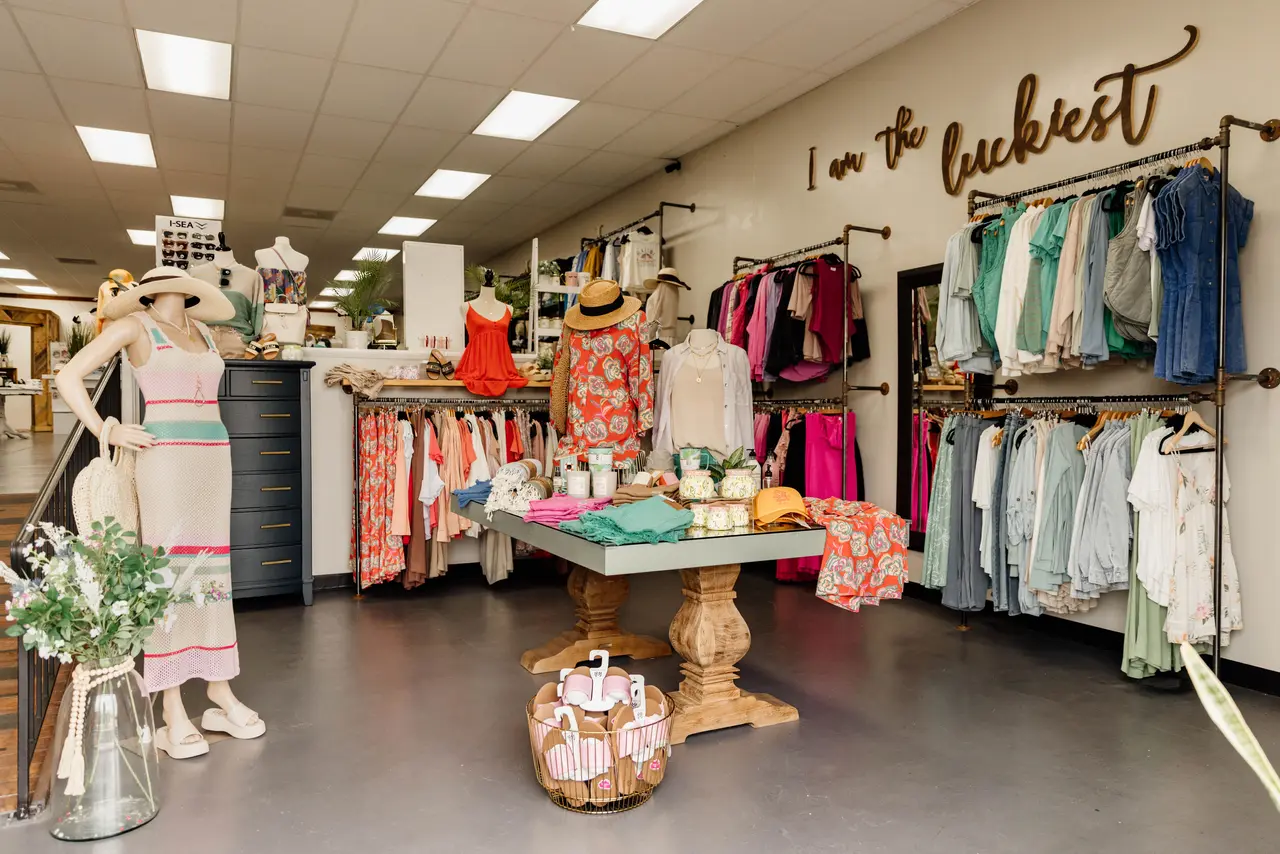Exploring the World of Sustainable Boutique Fashion Brands
Exploring the World of Sustainable Boutique Fashion Brands
Blog Article
Lasting Fashion: Exactly How Eco-Friendly Clothes Is Shaping the Future of Style
As the fashion business encounters raising scrutiny over its environmental impact, the surge of lasting fashion provides an appealing option that aligns design with ecological duty. Employing cutting-edge products such as plant-based textiles and recycled fibers, alongside advanced techniques like electronic and 3D printing, designers are redefining what it implies to be fashionable in the modern age. Concurrently, the expanding appeal of upcycling and second hand culture is fostering a change in the direction of a circular economic situation. Just how does this motion truly influence the future trajectory of style, and what obstacles exist in advance in its widespread adoption?
Cutting-edge Lasting Materials
As the garment industry grapples with its environmental effect, innovative sustainable materials have actually emerged as a vital option for decreasing eco-friendly impacts. Amongst one of the most encouraging products are those stemmed from natural, eco-friendly sources, such as natural cotton, hemp, and bamboo. These products not just lower dependency on nonrenewable fuel sources but also minimize hazardous pesticide usage and water intake. Organic cotton, as an example, uses considerably less water than standard cotton and eliminates the requirement for toxic chemicals, thus protecting soil wellness and biodiversity.
Along with plant-based products, improvements in biofabrication have brought about the advancement of lab-grown textiles. Mycelium natural leather, stemmed from mushroom origins, presents a versatile and naturally degradable option to animal natural leather. Its manufacturing causes considerably reduced carbon discharges and water usage, making it a much more sustainable choice for stylist looking for to align with environmentally friendly practices.
Recycled materials are likewise gaining traction, with polyester made from recycled plastic containers representing a significant innovation. This advancement not just draws away plastic waste from land fills and oceans yet also reduces power usage contrasted to producing virgin polyester. With each other, these products highlight the possibility for an extra sustainable apparel industry, leading the way for environmentally aware style and production.
Eco-Conscious Manufacturing
Structure on the technologies in sustainable products, the apparel industry is also re-evaluating its manufacturing procedures to additionally decrease ecological effect. Key strategies include decreasing water consumption, decreasing carbon emissions, and getting rid of harmful chemicals. By taking on closed-loop systems, suppliers aim to recycle water and energy efficiently, significantly reducing waste. The integration of renewable power sources, such as solar and wind power, right into production facilities even more curtails reliance on nonrenewable fuel sources.
One more vital element is the decrease of hazardous chemicals commonly utilized in dyeing and ending up fabrics. Eco-conscious producers are changing in the direction of plant-based dyes and waterless dyeing innovations, which not only guard neighborhood environments but also enhance employee safety and security. Advancements like digital printing reduce textile waste and power intake, providing a cleaner choice to standard methods.
With the development of blockchain modern technology, firms can currently give thorough insights into their supply chains, making certain environmentally friendly and moral methods at each step. As the demand for eco-conscious items expands, suppliers are forced to innovate, making sure that the future of style is both elegant and sustainable.
The Rise of Upcycling
Upcycling, a transformative method in lasting style, includes creatively repurposing discarded materials into new, premium products. This cutting-edge method not only decreases waste yet likewise diminishes the demand for basic materials, therefore decreasing the ecological effect of clothing manufacturing. By rebuilding and reimagining existing things, designers and style brands are able to instill creativity into their collections while advertising ecological responsibility.

Additionally, the upcycling movement has encouraged little businesses and independent designers, that often lead in development as a result of their agility and imagination. By taking advantage of on the bountiful availability of extra materials, these entities add to a round economy, showing that style can be both elegant and sustainable. Through upcycling, the sector takes significant strides towards a more aware and liable future.
Thrift Culture's Impact
The expanding second hand culture dramatically improves the her explanation landscape of lasting fashion, highlighting the importance of conscious usage. This cultural change encourages consumers to welcome used garments, thereby reducing the need for new garment production and reducing environmental impact. Second hand buying not only extends the lifecycle of apparel but additionally decreases the carbon impact connected with manufacturing, transporting, and throwing away clothing.
A crucial aspect of thrift society is its democratization of fashion. By using a vast selection of styles from numerous ages at inexpensive costs, second hand stores make fashion obtainable to a more comprehensive target market. This access fosters a feeling of uniqueness and creativity, as customers mix and suit unique items to curate customized wardrobes without adding to the top article fast style cycle.
Moreover, thrift society advertises circularity in fashion, aligning with the concepts of a round economic situation. As even more consumers and developers embrace thrift society, the style sector is compelled to adapt, incorporating lasting techniques to fulfill the expanding demand for eco-conscious choices.

Future Trends in vogue
Style's development is increasingly shaped by technological advancements and sustainability-driven efforts. As customers come to be a lot more eco aware, the sector is responding with groundbreaking improvements that redefine the future of design. One famous fad is the rise of digital style, where virtual garments can be used in enhanced truth atmospheres, dramatically lowering fabric waste. This shift not just provides to the digital-savvy customer yet likewise lessens the environmental impact traditionally connected with garment manufacturing.
Furthermore, the integration of blockchain technology uses new opportunities in openness and traceability, enabling customers to validate the sustainability credentials of their garments. boutique fashion. This makes sure liability in supply chains and promotes moral sourcing methods. 3D printing is yet one more technology that guarantees to reinvent making processes by making it possible for on-demand production, thus minimizing excess supply and waste
As these technologies grow, they are positioned to transform the fashion landscape, combining style with sustainability. The future of style, for that reason, lies in a smooth mix of technology, development, and ecological duty.
Conclusion
The change of the fashion industry via sustainable methods indicates a crucial shift towards ecological accountability. This evolution not just lines up style with eco-friendly sustainability however likewise establishes a criterion for future trends concentrated on responsibility and technology.
As the fashion sector deals with enhancing scrutiny over its ecological impact, the rise of lasting fashion supplies a promising option that aligns design with ecological duty.As the style market grapples with its ecological influence, cutting-edge lasting materials have arised as a crucial solution for lowering environmental impacts. With each other, these products underscore the possibility for an navigate to these guys extra lasting fashion industry, paving the way for eco aware design and manufacturing.
Building on the advancements in lasting products, the style market is additionally re-evaluating its production procedures to better lower environmental impact. boutique fashion.Upcycling, a transformative method in lasting style, involves artistically repurposing thrown out materials right into brand-new, premium items
Report this page